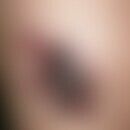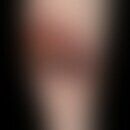DefinitionThis section has been translated automatically.
Ammonium persulphate is the most important allergen from the group of persulphates, to which sodium and potassium persulphate also belong. They are used almost exclusively in bleaching agents in the hairdressing trade.
General informationThis section has been translated automatically.
- The most significant exposure arises from the regular use of ammonium persulphate and potassium persulphate in hair bleaching products in concentrations of up to 60%. Eczema and respiratory reactions are observed in production plants for persulfates and especially the bleaching products.
You might also be interested in
Clinical pictureThis section has been translated automatically.
- Late type reactions occur under the clinical picture of allergic contact eczema. Epidemiological evaluations of the IVDK show that ammonium persulfate is the most common occupational allergen in the hairdressing trade with over 20%.
- Immediate type reactions range from contact urticaria and mucous membrane reactions with rhinitis and conjunctivitis to bronchial reactions and severe bronchial asthma and anaphylactic reactions.
Note(s)This section has been translated automatically.
- Due to the not uncommon combination of late type and immediate type sensitization, epicutaneous testing should include an early reading 20 minutes after application of the test substances and partial symptoms of immediate type allergic reactions should be expected.
- Since bleaching is very common nowadays, direct contact with ammonium persulfate may be avoided in larger hairdressing salons, but the substance cannot be eliminated in principle. Also the switch to a product with exclusive use of potassium persulfate is not a solution due to the high cross-allergenicity of persulfates. If airborne contact eczema occurs with pronounced sensitization, it cannot be prevented by preventive measures, nor can mucous membrane reactions, as this would require the use of heavy respiratory protection agents.
- In the assessment of a BK 5101, the effects of the allergy should be assumed to be minor, in rare individual cases with anaphylactic reactions to moderate amounts of allergens, the effects should be assumed to be moderate.
- Insofar as respiratory reactions that do not lead to persistent changes occur in addition to skin symptoms, this is treated as a so-called systemic disease like an insured event - analogous to sensitisation to latex - and a total MdE is estimated.
LiteratureThis section has been translated automatically.
- Becker D et al. (2010) Evaluation of the effect of occupational sensitisation by ammonium persulphate in the context of the determination of a reduction in gainful employment according to No. 5101 of Annex 1 to the Ordinance on Occupational Diseases (BeKV). Dermatol Occupation Environment 58:185-189




